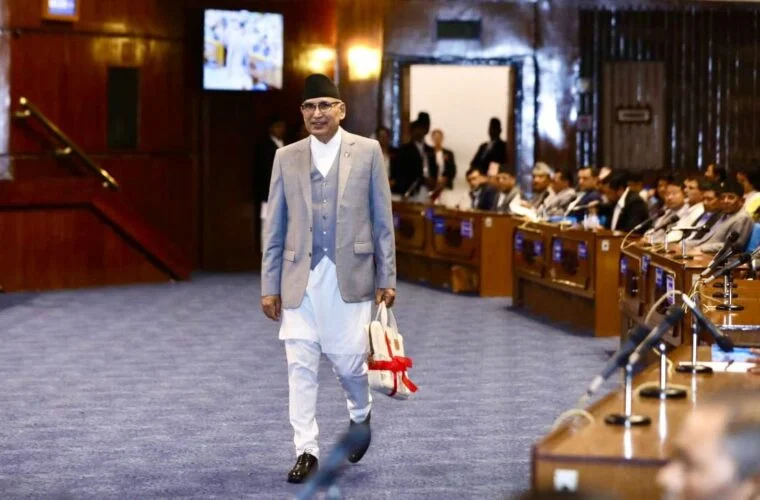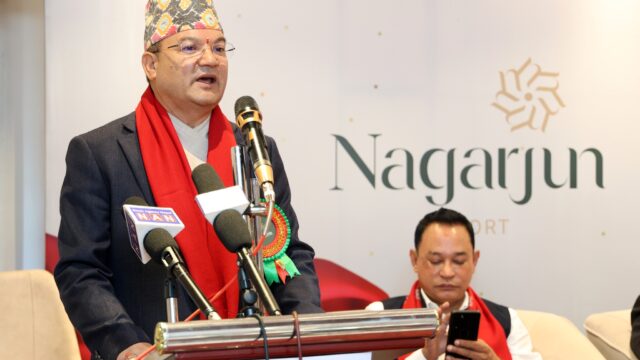In a significant push to boost Nepal’s tourism industry, the government has announced plans to brand the country as a safe and attractive tourist destination. The commitment was made during a joint session of the Federal Parliament, where Deputy Prime Minister and Finance Minister Bishnu Prasad Paudel presented the budget for the upcoming fiscal year 2082/83. The budget outlines comprehensive measures focused on infrastructure development, expansion of quality services, and strategic marketing to position Nepal prominently in the global tourism market.
According to the budget announcement, special promotional programs targeting tourists from neighboring countries will be introduced. These programs will focus on enhancing Nepal’s visibility and appeal by highlighting its natural beauty, cultural richness, and adventure offerings. The government aims to make Nepal a go-to destination for tourists interested in eco-tourism, mountain expeditions, religious pilgrimages, cultural explorations, and more.
The budget outlines plans to strengthen tourism services in key destinations, including mountain tourism, adventure sports tourism, and religious and cultural tourism. To cater to the needs of international and domestic travelers, high-quality tourist services will be expanded in significant tourist hotspots across the country. These include not only traditional sites but also emerging destinations, thereby ensuring more balanced and inclusive tourism development.
One of the notable features of the budget is the government’s emphasis on promoting diverse tourism niches, including nature-based, cultural, adventure, film, wellness, and sports tourism. With a growing trend in specialized tourism worldwide, Nepal aims to capitalize on its unique strengths in these areas. For instance, in adventure tourism, the focus will be on safe trekking routes and mountaineering support, while film tourism will be promoted by making scenic locations accessible and production-friendly.
In a bid to enhance service delivery and tourist experience, the budget has also proposed the establishment of welcome and service centers at key overland entry points. This is aimed particularly at land-entry tourists, ensuring they receive information, safety briefings, and assistance as soon as they enter Nepal. Furthermore, the government is taking steps to attract private sector investment in the development of tourism destinations, recognizing the vital role the private sector plays in enhancing tourism offerings.
Additionally, the government plans to promote jungle safaris, trekking, and eco-tourism in national parks, conservation areas, and wildlife reserves. Sites like Shuklaphanta, Khaptad, Bardiya, Rara, Lumbini, Muktinath, Sauraha, Gosainkunda, Janakpurdham, Kalinchowk, Koshi Tappu, Sagarmatha, Kechanakawal, and Pathibhara will receive focused attention for tourism development. Infrastructure in these locations will be improved to accommodate increasing tourist flow while maintaining ecological balance.
Nepal to Be Branded as a Safe and Attractive Tourist Destination
The budget also assures that reliable safety and emergency rescue arrangements will be established for trekkers and mountaineers, particularly in high Himalayan regions. This includes setting up well-coordinated rescue systems and support services to ensure that tourists feel secure while exploring challenging terrains.
In a groundbreaking move, the government has officially recognized hotels and resorts as productive industries, which makes them eligible for various incentives. This includes tax relief and discounts on electricity tariffs, aiming to boost investment in the hospitality sector. Additionally, legal provisions will be made to encourage workers in hotels, restaurants, and jungle safari services by offering them incentives and protections under new labor policies.
To further support religious and cultural tourism, the budget includes plans for developing infrastructure in major religious destinations like Sagarmatha, Pashupatinath, Lumbini, Swargadwari, Rara, and Khaptad. Special attention will be given to heritage sites such as Swayambhunath, Hanumandhoka, Pashupatinath, and Boudhanath, where evening pedestrian pathways will be developed to enrich the visitor experience.
Furthermore, the government plans to promote rafting activities in major rivers like Karnali, Bheri, Gandaki, and Trishuli, which are popular among adventure seekers. Along the Pushpalal Mid-Hill Highway, new tourism infrastructure will be developed in scenic locations to encourage domestic and international travel through these less explored routes.
The new budget strongly emphasizes public-private collaboration for effective implementation of tourism promotion initiatives. The Nepal Tourism Board will facilitate these efforts, working closely with private stakeholders to execute destination marketing, skill development, and product diversification strategies.
Overall, the government’s budget for FY 2082/83 lays down an ambitious and inclusive roadmap for making Nepal a world-class tourism destination. By focusing on safety, service quality, infrastructure, sustainability, and strategic branding, Nepal is positioning itself to attract more international tourists while also enriching the experience for domestic travelers. If implemented effectively, these measures could significantly enhance Nepal’s tourism sector, contributing to economic growth, employment generation, and global recognition as a premier travel destination.






